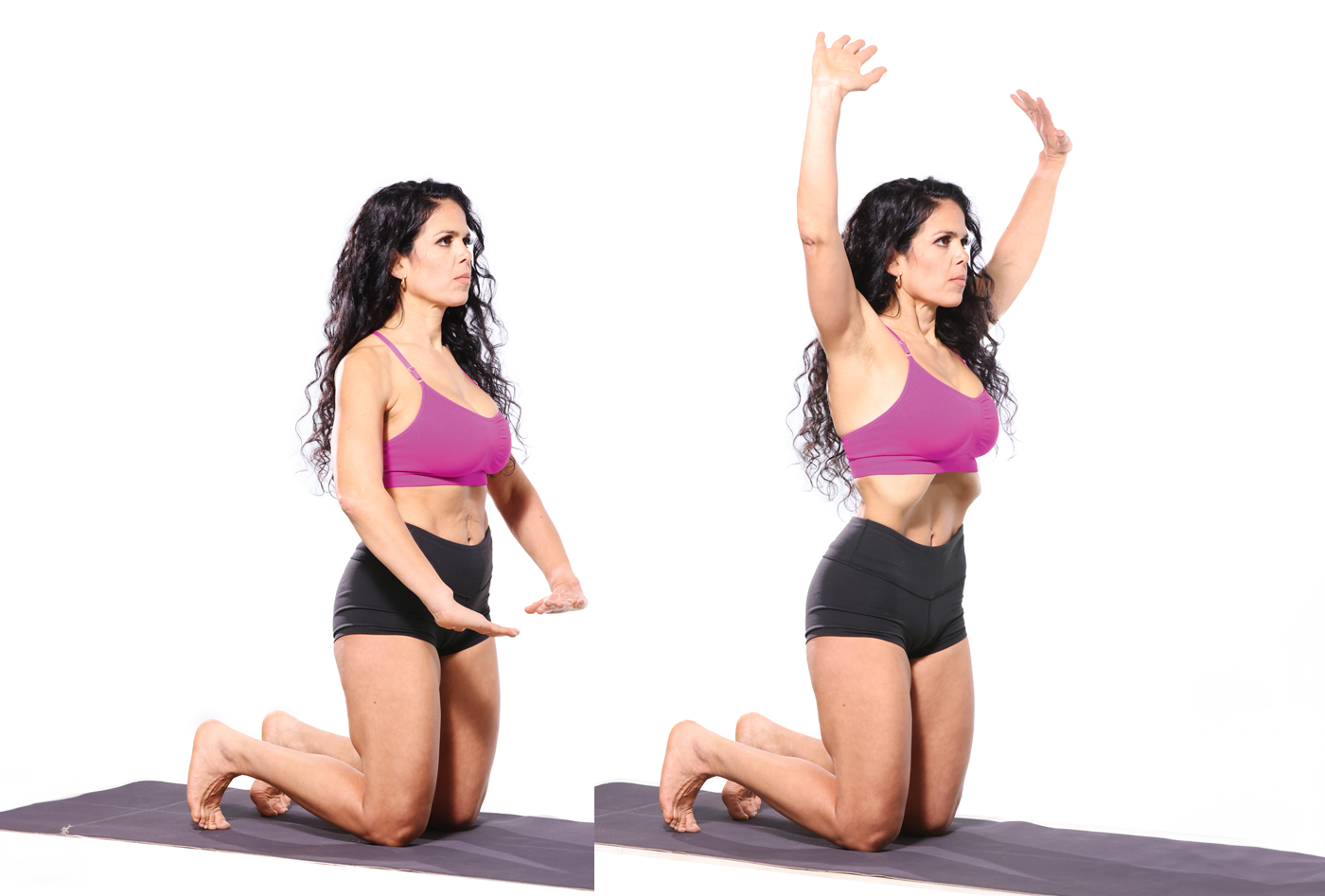
Written by Naura Ben-Hassen, Pelvic Health Specialist, Kinesiologist, Osteopath, and Fitness and Movement Expert
Photography by Paul Buceta
Hair & Makeup by Monica Kalra
PART THREE of a six-part series helping you regain your body and move freely without pain, incontinence, and discomfort in your core.
Have you heard about hypopressive exercises? These are breathing exercises that have several benefits, such as slimming the waist, working your deep abdominals, improving posture, working your breathing capacity, helping with pelvic problems such as prolapse, diastasis and hernia, and working your pelvic floor muscles.
The pelvic floor muscles and the breathing muscles work in synergy, so with poor alignment and/or poor breathing, we impact the muscles of the abdominal girdle and the pelvic floor. This is where hypopressive exercises come in as they are postural-respiratory exercises which work the body as a whole. They’re used as a technique to restore, but also to keep our core strong.
Hypopressive exercises were a revelation for me. I was dealing with hip and back pain that wouldn't go away despite all the strengthening and stretching exercises I did. When I discovered and started to integrate hypopressive exercises into my daily routine, little by little the pain faded away. I was won over. I never imagined that my pain came from my pelvic floor or my breathing!
Breath Better Feel Better, with The Vacuum
“Vacuum” is a key element of hypopressive exercises. This is a specific breathing technique aimed at reducing intra-abdominal pressure and activating the deep muscles of the trunk, particularly those of the pelvic floor. But hypopressive breathing is more than vacuum, it is an approach that encompasses the entire body using different postures. We practice hypopressive breathing in the form of flow, like in yoga. Hypopressive breathing begins with diaphragmatic breathing, also known as 360 breathing—a technique that promotes better circulation and blood flow throughout the pelvic region. Improved circulation can aid in the healing and rehabilitation of tissues in the pelvic floor area, which may be compromised due to conditions like pelvic floor muscle weakness or pelvic organ prolapse.
Unlike traditional abdominal exercises that can increase
intra-abdominal pressure, hypopressive exercises aim to reduce it.
Hypopressive exercise breathing allows individuals to connect to their pelvic floor muscles in coordination with specific breathing and postural adjustments. This increased awareness of the pelvic floor muscles can help individuals develop better control over these muscles, improving bladder and bowel function, as well as sexual health.
Hypopressive exercises focus on engaging not only the superficial abdominal muscles but also the deep core muscles, including the transverse abdominis, multifidus, and pelvic floor muscles. By activating these deep muscles, hypopressives help to stabilize the pelvis and support the pelvic organs, which can improve pelvic floor function. Unlike traditional abdominal exercises that can increase intra-abdominal pressure, hypopressive exercises aim to reduce it. By decreasing intra-abdominal pressure, hypopressives alleviate strain on the pelvic floor muscles and surrounding tissues, which is particularly beneficial for individuals with pelvic floor dysfunction, such as urinary incontinence or pelvic organ prolapse.
Proper posture is also essential for pelvic floor health. Hypopressive exercises emphasize maintaining a neutral spine and engaging the core muscles to support the pelvis and spine. By improving posture, hypopressives reduce the load on the pelvic floor muscles and promote optimal alignment of the pelvis, which can remove the pelvic floor symptoms and prevent dysfunction. This considered, hypopressive exercises can be used in prevention, and in your daily routine to create a balance between intra-abdominal pressure and core muscle activation, thereby promoting core stability and pelvic floor health. It is important to learn and practice hypopressive breathing techniques under the guidance of a qualified instructor to ensure proper execution and maximize benefits.




















